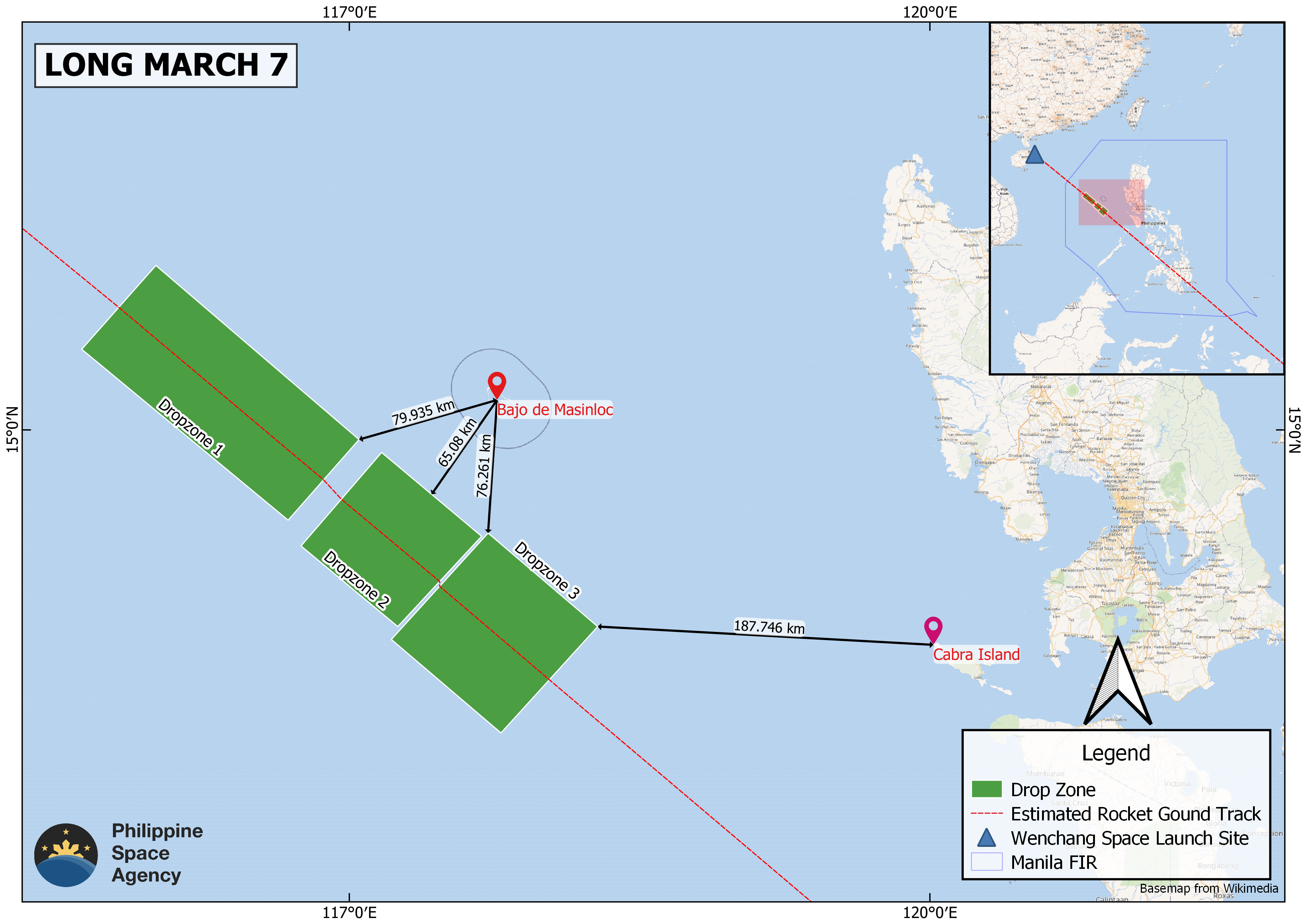The Philippine Space Agency (PhilSA) is monitoring debris from Long March 7 rocket confirmed to have launched on Wednesday, 9:22 PM Philippine time, from Wenchang Space Launch Center in Wenchang, Hainan. Unburned debris expected to be discarded from the rocket before it entered outer space is projected to have fallen within three identified drop zone areas that are approximately 65 to 79 kilometers from Bajo de Masinloc. The debris is unlikely to have dropped on land features or inhabited areas in the Philippines. However, discarded debris may float around the area or wash to nearby coasts.

Estimated drop zones for expected unburned debris from Long March 7
The estimated drop zone coordinates are:
Drop zone 1
15 51 00N 116 00 00E
14 57 00N 117 03 00E
14 32 00N 116 41 00E
15 25 00N 115 37 00E
Drop zone 2
14 53 00N 117 10 00E
14 27 00N 117 41 00E
13 59 00N 117 15 00E
14 24 00N 116 45 00E
Drop zone 3
14 28 00N 117 43 00E
13 59 00N 118 17 00E
13 26 00N 117 47 00E
13 55 00N 117 13 00E
The drop zone areas were verified through coordination with the Civil Aviation Authority of the Philippines (CAAP), which received the Notice to Airmen (NOTAM) referring to the aerospace flight activity.
PhilSA has issued an advisory to relevant government authorities before the launch to warn of the risks of falling debris to ships, aircraft, fishing boats, and other vessels passing through the drop zone areas, and recommended the issuance of warnings and temporary restrictions.
In case of debris sighting, PhilSA advises the public to immediately inform local authorities for appropriate action, and avoid retrieving the debris. Rocket debris that may contain remnants of toxic substances such as rocket fuel. In cases when contact with debris is unavoidable, personnel protective equipment (PPE) is recommended.
PhilSA will continue to monitor the possible re-entry of the rocket’s upper stages to Earth’s atmosphere.




